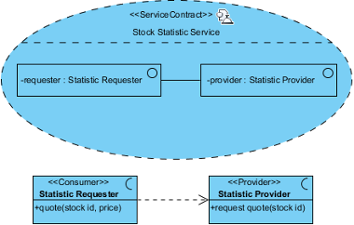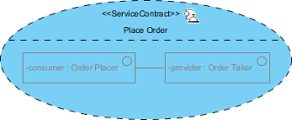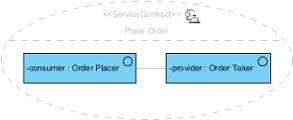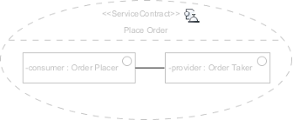How to Draw SoaML Service Contract Diagram?
SoaML supports both a contract and an interface-based approach to SOA. They differ in the way services are specified.
The service contract approach defines the contract that specify how providers and consumers work together to achieve a goal, through the use of service. The service contract represents an agreement between parties for how the service is to be provided and consumed. Such agreement includes the interfaces, choreography and other terms and conditions.
Service contract diagram is designed for the specification of service contract. Modelers usually combines the use of sequence diagram and activity diagram in representing the choreography of a service contract.
 |
| A sample service contract diagram |
Creating service contract diagram
- Select Diagram > New from the application toolbar.
- In the New Diagram window, select Service Contract Diagram.
- Click Next.
- Enter the diagram name and description. The Location field enables you to select a model to store the diagram.
- Click OK.
Notations
The description of notations is either extracted or derived from the OMG SoaML Specification v1.0.1.
|
|||||||||||||||||||||
| A list of supported notations in service participant diagram |
Related Resources
The following resources may help you to learn more about the topic discussed in this page.
| Chapter 3. Service contract diagram | Table of Contents | Chapter 4. Services architecture diagram |






